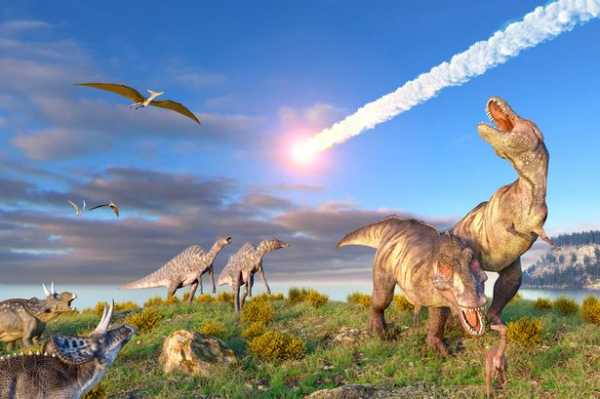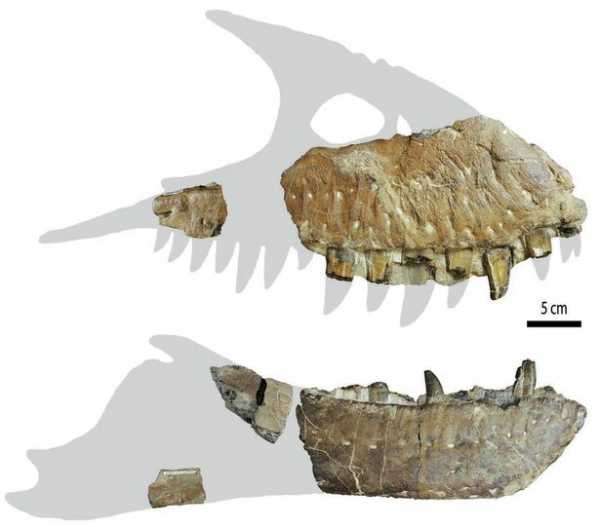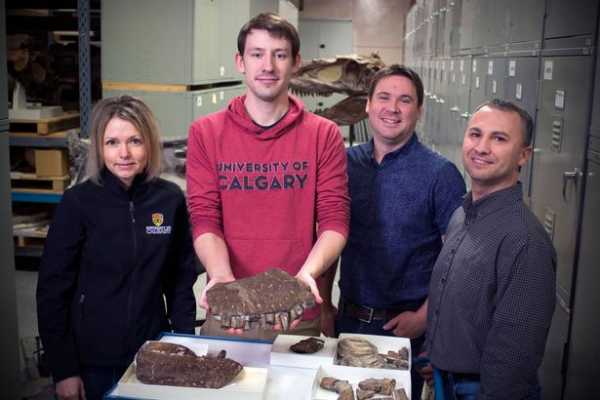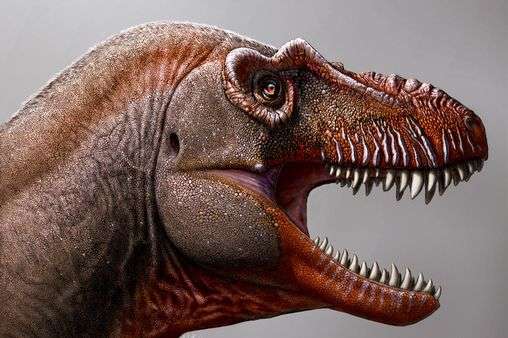Researchers from the University of Calgary have discovered the fossil of a predatory dinosaur which they’ve named the ‘Reaper of Death’
-

Dinosaurs were killed by asteroid and not volcanoes, scientists confirm

The ‘Reaper of Death’ dinosaur (Image: Julius Scotonyi, courtesy Royal Tyrrell Museum)
It’s often referred to as the ‘King of the Dinosaurs’, but a new study suggests that T.Rex may have had an even scarier cousin.
Researchers from the University of Calgary have discovered the fossil of a predatory dinosaur which they’ve named the ‘Reaper of Death’.
The dinosaur roamed Canada alongside T.Rex around 79 million years ago, according to the researchers.
Dr Francois Therrien, co-author of the study, said: “With this new species, we now know that tyrannosaurs were present in Alberta prior to 77 million years ago, the age of the next-oldest tyrannosaur.
“We can tell from the skull how Thanatotheristes is related to the other, better-known tyrannosaurs from Alberta.”

The researchers discovered parts of the dinosaur’s skull and upper and lower jaw bones, from which they could decipher several features about the creature
(Image: Jared Voris)

The researchers with the fossil
The researchers discovered parts of the dinosaur’s skull and upper and lower jaw bones, from which they could decipher several features about the creature.
The bones, which had tumbled from a cliff and shattered on the shore of the Bow River, were found by John and Sandra De Groot in 2010 near the town of Hays, about 200 kilometres southeast of Calgary.
An initial analysis suggests that the dinosaur had a long, deep snout and more teeth in the upper jaws than T.Rex, which had a shorter, more bulldog-like face.
Meanwhile, the researchers estimate that the dinosaur was around eight-metres long, and preyed on large plant-eating dinosaurs.
The findings suggest that tyrannosaurs didn’t share one general body type, and instead had distinct skull forms and body sizes.
Jared Voris, who led the study, added: “The next step is to test that hypothesis further and compare how tyrannosaur species from various geological regions differed.”
Sourse: www.mirror.co.uk





